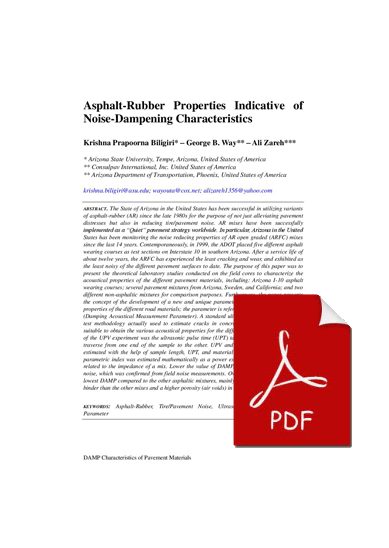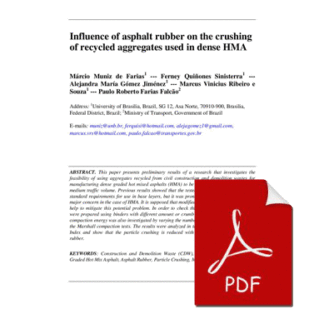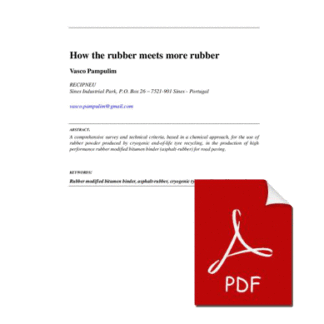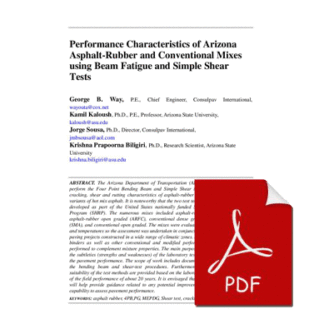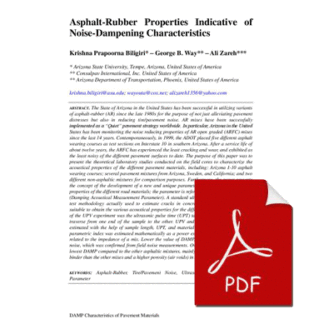Description
The State of Arizona in the United States has been successful in utilizing variants of asphalt-rubber (AR) since the late 1980s for the purpose of not just alleviating pavement distresses but also in reducing tire/pavement noise. AR mixes have been successfully implemented as a “Quiet” pavement strategy worldwide. In particular, Arizona in the United States has been monitoring the noise reducing properties of AR open graded (ARFC) mixes since the last 14 years. Contemporaneously, in 1999, the ADOT placed five different asphalt wearing courses as test sections on Interstate 10 in southern Arizona. After a service life of about twelve years, the ARFC has experienced the least cracking and wear, and exhibited as the least noisy of the different pavement surfaces to date. The purpose of this paper was to present the theoretical laboratory studies conducted on the field cores to characterize the acoustical properties of the different pavement materials, including: Arizona I-10 asphalt wearing courses; several pavement mixtures from Arizona, Sweden, and California; and two different non-asphaltic mixtures for comparison purposes. Furthermore, the paper presents the concept of the development of a new and unique parameter to characterize acoustical properties of the different road materials; the parameter is referred to in this study as DAMP (Damping Acoustical Measurement Parameter). A standard ultrasonic pulse velocity (UPV) test methodology actually used to estimate cracks in concrete was modified and made suitable to obtain the various acoustical properties for the different materials. The outcome of the UPV experiment was the ultrasonic pulse time (UPT) taken for the acoustic wave to traverse from one end of the sample to the other. UPV and impedance (Z) values were estimated with the help of sample length, UPT, and material density. DAMP, an acoustic parametric index was estimated mathematically as a power expression, which also directly related to the impedance of a mix. Lower the value of DAMP, the lower the tire/pavement noise, which was confirmed from field noise measurements. Overall, the ARFC mix had the lowest DAMP compared to the other asphaltic mixtures, mainly due to the higher amount of binder than the other mixes and a higher porosity (air voids) in the mix matrix.

